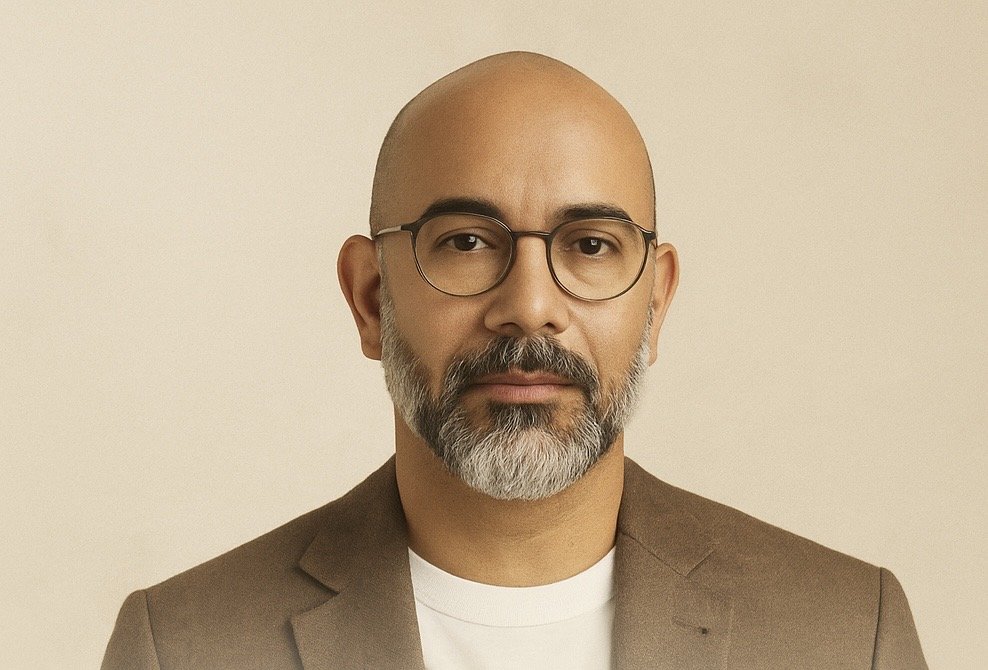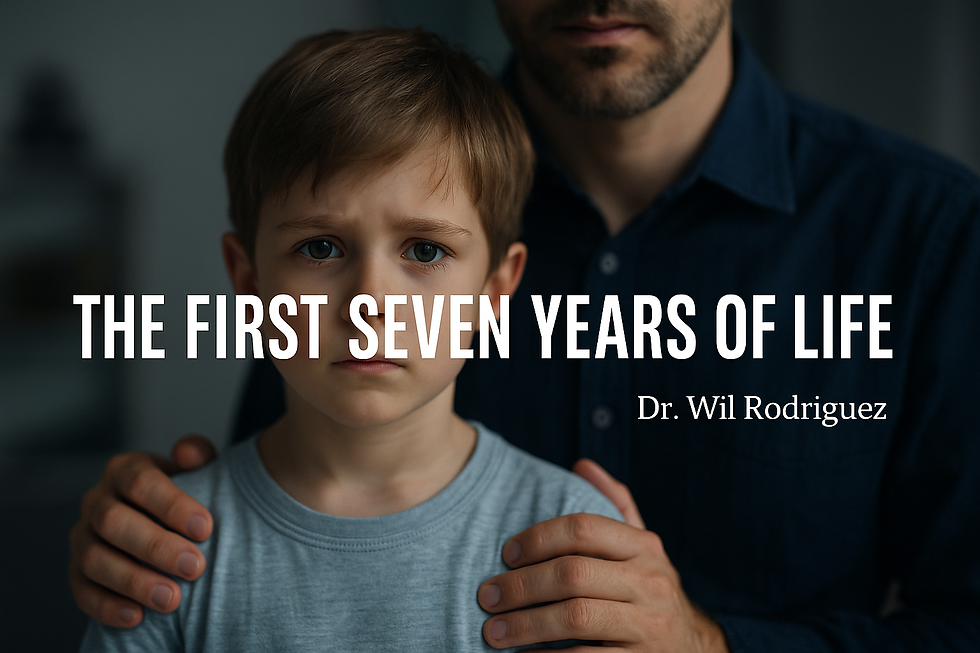The First Seven Years: How Childhood Write the Rest of Your Life
- Dr. Wil Rodriguez

- Aug 19
- 5 min read
By Dr. Wil Rodriguez for TOCSIN Magazine

The Jesuit Maxim That Changed History
“Give me a child until he is seven, and I will show you the man.”
This famous phrase, attributed to Saint Francis Xavier and adopted as Jesuit educational philosophy, wasn’t merely a pedagogical declaration—it was a profound recognition of neuroplasticity, human malleability, and subconscious programming.
What makes this maxim so haunting is not just its simplicity, but its truth. The Jesuits understood what modern neuroscience now validates: the destiny of an adult is coded in the subconscious during childhood. To say “show me the child, and I will show you the man” was not just rhetoric—it was a blueprint for cultural influence and generational control.
They knew something profound: if you want to control the future, you do not need to control adults—you need to control children before they become adults.
The Critical Window: Why Seven Years?
The first seven years of human development represent what neuroscientists call the critical period—a window when the brain operates in theta and delta states, the same brainwaves associated with hypnosis, deep learning, and heightened suggestibility.
During this stage, children are like biological recording devices. They absorb information directly, without the filters of skepticism, rational analysis, or doubt. Everything said to them, everything modeled around them, becomes downloaded into their subconscious system.
Dr. Bruce Lipton’s work in epigenetics expands this concept further: during these years, children are not just memorizing information—they are embedding patterns of belief, behavior, self-image, and possibility into the very wiring of their brains.
Unlike adults, who weigh, debate, and analyze, children operate almost exclusively in implicit learning. They learn not only what they are told but also what they observe, what they feel, and what they repeatedly experience.
These programs become the default operating system for life.
How Authority Figures Become Internal Programmers
Human survival depends on developmental dependency—the child’s instinct to trust and obey authority figures. This instinct, which ensures survival in early years, also makes children highly vulnerable to suggestion, conditioning, and programming.
The Authority Bypass
Because their critical faculties are still dormant, children accept the words of authority figures as unquestionable truth. Parents, teachers, religious leaders, and caretakers become living archetypes whose voices echo permanently in the subconscious mind.
Carl Jung referred to these figures as archetypal authorities—their influence endures for life, often internalized as an inner voice that continues to guide, criticize, or limit us long after childhood has ended.
Repetition and Reinforcement
The subconscious learns through rhythm, pattern, and repetition.
“You’re lazy.”
“You’re brilliant.”
“Money is hard to earn.”
“God is watching.”
Repeated often enough, these phrases stop being words and become identities. Neural circuits are forged through consistency, turning passing messages into permanent beliefs.
Emotional Imprinting
The most powerful programming happens when authority is combined with emotion.
A phrase spoken in anger burns itself into memory.
A phrase spoken in love can anchor lifelong courage.
A phrase spoken in fear can paralyze potential.
These are not just memories; they are neural imprints, forming the hidden DNA of destiny.
A Story of Two Destinies
Consider Maria and Sarah, both seven years old, both equally intelligent and capable.
Maria’s Programming:
Maria grows up hearing: “You’re smart, you can accomplish anything you set your mind to.” When she struggles, her mother reframes it: “Challenges make your brain stronger.” Teachers reward curiosity over compliance, nurturing resilience.
Sarah’s Programming:
Sarah hears: “Don’t be too ambitious, ambition leads to failure.” When she excels, her father warns: “Don’t be proud, pride comes before a fall.” Religious instructors emphasize obedience and punish questioning.
The Result:
By thirty, Maria is an entrepreneur, taking risks and interpreting setbacks as opportunities.
Sarah, equally gifted, remains underemployed, unconsciously sabotaging her own progress whenever she approaches success.
Both lives diverged not by fate but by the subconscious scripts installed before the age of reason.
The Mechanisms of Subconscious Control
These hidden childhood codes operate through precise mechanisms:
Selective Attention
The subconscious acts as a filter of perception. Maria sees opportunities everywhere. Sarah literally cannot perceive them, because her mind has been programmed not to.
Behavioral Autopilot
Around 95% of human behavior is subconscious. What feels like choice is often code. Sarah’s hesitation, Maria’s boldness—both are not deliberate but pre-programmed behaviors.
Self-Fulfilling Prophecies
Beliefs generate behaviors that confirm themselves. Sarah avoids risk, reinforcing her belief that ambition is dangerous. Maria takes risks, succeeds, and confirms her belief that she is capable.
The subconscious is both the jailer and the liberator.
The Modern Implication
This is why social transformation often takes generations, not years.
Parents, teachers, politicians, media figures—whether they realize it or not—are not just shaping opinions. They are programming subconscious blueprints for future societies.
Every insult, every affirmation, every repeated stereotype becomes the architecture of the collective subconscious.
The Jesuit maxim wasn’t about religion alone—it was about the systemic understanding that children are the builders of nations, and childhood is the battlefield where freedom or servitude is decided.
Breaking the Code
To break the code is to reclaim freedom.
Adults can reprogram through:
Meditation and mindfulness (lowering brainwaves to theta).
Hypnotherapy (accessing subconscious directly).
Affirmations and visualization (installing new scripts).
Corrective emotional experiences (rewriting the meaning of old trauma).
But the most powerful tool remains: conscious education and parenting.
What we say to a child today is the constitution of tomorrow’s society.
The Jesuit insight was not superstition—it was science ahead of its time. Humanity’s greatest vulnerability is also its greatest opportunity: the programmable mind of the child.
Reflection Box: The Childhood Code
What programs shaped your beliefs before you even knew you had beliefs?
Which voices became your inner voice, your critic, or your guide?
What hidden sentences are still scripting your choices about love, money, success, and meaning?
And most urgently: what code are you writing into the children around you?
The child’s mind is not just a classroom—it is the operating system of humanity. Programmed with fear, it builds generations of submission. Programmed with courage, it builds centuries of innovation and freedom.
The future is not only decided in elections or economies—it is etched silently into the subconscious of seven-year-olds.
Join the Conversation at TOCSIN Magazine
The exploration of subconscious programming is not just academic—it is about civilization itself.
At TOCSIN Magazine, we shine a light on the hidden architectures shaping identity, culture, and society.
What you’ll find in TOCSIN Magazine:
Investigative Features on underreported truths.
Expert Analysis connecting psychology, neuroscience, and history.
Stories of Transformation from individuals who broke their childhood codes.
Policy Insights imagining education that liberates, not confines.
Community Spotlights highlighting those rewriting humanity’s scripts.
👉 Subscribe to TOCSIN Magazine today. Be part of the community that understands: to change the world, we must begin before age seven. Go to: tocsinmag.com
Because justice requires truth.
And truth requires courage.







Comments